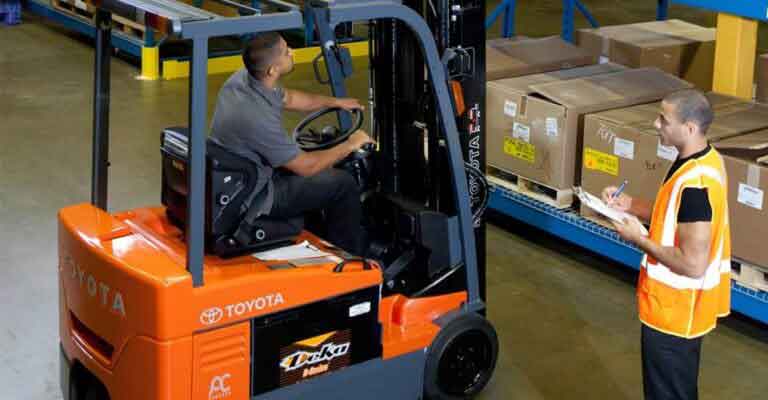Neglecting proper forklift safety protocols can lead to accidents, injuries, and property damage. Learn ten forklift operator safety tips to maintain a safe and productive work environment.
1. Proper Training and Certification
Forklift safety begins with education and training. Comprehensive forklift operator training covers equipment controls, load handling, inspection, and safety procedures. Training programs typically include classroom instruction, hands-on training, and evaluations. Anyone who operates a forklift must complete forklift operator safety training and have a certification on every different type of forklift they drive.
Toyota Material Handling Solutions provides forklift operator training in Los Angeles County. Find dates and sign up for forklift operator training here.
2. Inspect Your Forklift Before Use
A thorough pre-operational inspection is a fundamental safety practice. Before each shift, take the time to inspect the forklift for any signs of damage, leaks, or malfunctions. This inspection should cover various components, including tires, brakes, steering, lights, and safety features like horns and seatbelts. If you identify any issues during the inspection, no matter how minor they may seem, it is crucial to report them immediately to your supervisor. Regular maintenance and prompt repairs are essential for ensuring the forklift is in good working condition.
OSHA standards require daily pre-shift inspection of powered industrial trucks. You can find sample daily checklists on OSHA’s website here.
3. Wear Appropriate Personal Protective Equipment (PPE)
Personal Protective Equipment (PPE) is vital for forklift operator safety. Always wear the necessary PPE, typically a hard hat to protect your head, a high-visibility vest to enhance your visibility to others, and steel-toed shoes to safeguard your feet from potential hazards. PPE provides an additional layer of protection, reducing the risk of injury in the event of an accident or impact. It’s a simple but effective way to mitigate potential risks while operating a forklift.
4. Stay Aware of Your Surroundings
Constant awareness is a cornerstone of forklift safety. As an operator, you must always remain vigilant about your surroundings. Keep an eye out for pedestrians, other vehicles, and obstacles that might be in your path. Use the forklift’s horn and lights to enhance your visibility and alert others to your presence. Additionally, be particularly cautious in areas with restricted visibility, such as blind corners, and always yield the right of way to pedestrians.
5. Obey Speed Limits and Load Capacity
Every forklift has specific speed limits and load capacities, which the manufacturer sets. It is imperative to strictly adhere to these limits to ensure safety. Exceeding speed limits or carrying loads beyond the recommended capacity can lead to accidents, tip-overs, and loss of control. Forklift operators should observe speed limits in indoor and outdoor settings, where factors like uneven terrain, weather conditions, and varying surfaces can affect the forklift’s stability and maneuverability.
6. Operate Smoothly
Smooth operation is essential for safely handling a forklift. Start and stop the forklift smoothly to prevent sudden jolts that could dislodge the load or compromise stability. Jerky movements can damage the goods and lead to accidents. Avoid making sharp turns, sudden accelerations, or abrupt stops whenever possible. These actions can unbalance the load and make it more challenging to control the forklift.
7. Safe Load Handling
Proper load handling is critical for forklift safety. When picking up a load, it is vital to ensure it is balanced and secure on the forks. This balance minimizes the risk of the load shifting or falling while in transit. The load should be tilted slightly backward when raising it to improve stability. This prevents the load from leaning forward, which could tip the forklift. If your forklift has attachments, ensure they are installed correctly and securely before use. Always be aware of overhead clearance when stacking loads. Coinciding with overhead structures or objects can lead to significant damage and safety hazards.
8. No Horseplay Allowed
While it may seem obvious, it’s worth emphasizing that forklifts are not toys, and horseplay should never happen. Engaging in activities such as racing with other forklifts or carrying passengers endangers your safety and jeopardizes the safety of those around you. Encourage a culture of responsible behavior and clarify that safety is non-negotiable in your workplace. Setting a strong example and promoting a safe work environment will help prevent unnecessary risks and accidents.
9. Use the Parking Brake
When your forklift is unused, engage the parking brake and turn off the engine. This seemingly routine step is crucial for maintaining a safe work environment. The parking brake prevents the forklift from moving unintentionally, particularly when parked on an incline.
10. Report Incidents and Near-Misses
Reporting incidents and near-misses is vital to forklift safety. Whether you’re directly involved in an incident or simply a witness to a near-miss, it’s crucial to report these events to your supervisor immediately. Reporting serves several essential functions. It allows for a thorough investigation to identify root causes and prevent similar incidents in the future. It also helps in implementing corrective actions and improving safety measures to enhance the overall safety culture of your workplace.
It’s important to remember that forklift operators should never compromise safety for expediency or convenience. Your vigilance and commitment to safety play a significant role in preventing accidents and injuries in the workplace. Following these guidelines protects yourself and contributes to a safer, more productive, and accident-free work environment.
Stay safe, and remember: safety first, always.
We provide training in Santa Fe Springs on the 1st and 3rd Friday of every month. Sign up for forklift certification today.
Tags: forklift safety, forklift safety training
